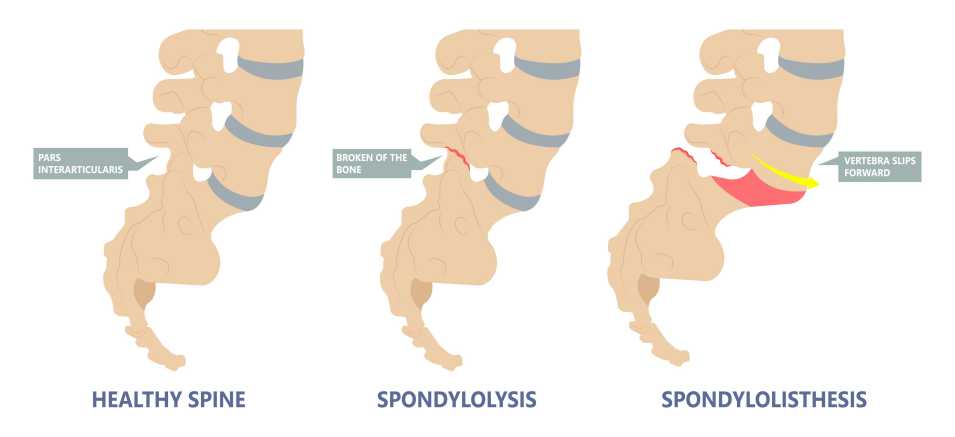Anterolisthesis and Spondylolisthesis are common spinal conditions that can cause pain and discomfort. There is a common misunderstanding that equates the two circumstances I’ve listed. This article will delve deeper into Anterolisthesis vs. Spondylolisthesis, their symptoms, diagnosis, and treatment options.
Introduction to Anterolisthesis and Spondylolisthesis
Anterolisthesis is a spinal condition where one vertebra in the spine slips forward over the vertebra below it. Although it most commonly affects the lower back (lumbar area), this illness can also manifest itself in the upper back (cervical and thoracic). Various factors, including trauma, degenerative changes, congenital abnormalities, and tumors can cause anterolisthesis.
Another disorder that can affect the spine is called spondylolisthesis, which occurs when one vertebra in the spine slides forward over the vertebra below it. Like Anterolisthesis, this condition mostly occurs in the lumbar region of the spine but can also occur in the cervical and thoracic regions. Various factors, including trauma, degenerative changes, congenital abnormalities, and tumors, can cause spondylolisthesis.
Symptoms and Diagnosis of Anterolisthesis and Spondylolisthesis
The symptoms of Anterolisthesis and Spondylolisthesis can be similar, but they can also differ. Pain in the lower back, muscle spasms, stiffness, and weakness in the legs are all possible symptoms of anterolisthesis. In severe cases, there may be bowel or bladder dysfunction. The symptoms of Spondylolisthesis can also include lower back pain, muscle spasms, stiffness, and weakness in the legs. In severe cases, there may be bowel or bladder dysfunction.
Doctors take medical histories and perform physical exams to identify Anterolisthesis and Spondylolisthesis. X-rays, CT scans, and MRIs help confirm the diagnosis. These tests can assess damage and severity.

Treatment options for Anterolisthesis and Spondylolisthesis
Anterolisthesis and Spondylolisthesis therapy depends on severity of damage. Mild cases may require rest, physical therapy, and pain medication. Surgery may be needed in extreme situations.
Surgical options for Anterolisthesis and Spondylolisthesis include spinal fusion, laminectomy, and decompression surgery. Spinal fusion involves using bone grafts or metal implants to fuse two or more vertebrae. Laminectomy involves removing part of the vertebrae to relieve pressure on the nerves. Decompression surgery involves removing part of the vertebrae to relieve nerve pressure.
Anterolisthesis vs. Spondylolisthesis
Differences between Anterolisthesis and Spondylolisthesis
The main difference between Anterolisthesis and Spondylolisthesis is the direction of the slip. In anterolisthesis, the vertebrae slip forward over the vertebra below it. In Spondylolisthesis, the vertebrae slip back over the vertebra below it. Another difference is that degenerative changes mostly cause Anterolisthesis, while a defect or fracture in the vertebrae mostly causes Spondylolisthesis.
Similarities between Anterolisthesis and Spondylolisthesis
Even though Anterolisthesis and Spondylolisthesis are different, they share some similarities. Both conditions can cause lower back pain, muscle spasms, stiffness, and leg weakness. Trauma, degenerative changes, congenital abnormalities, and tumors can also cause both conditions.
Anterolisthesis and Spondylolisthesis are two spinal conditions that can cause pain and discomfort. Although they are similar, they require different treatments. Anterolisthesis and Spondylolisthesis symptoms require medical care. Doctors can diagnose and offer treatment.
